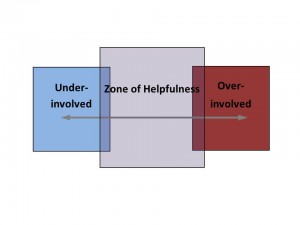
In a prior post, we suggested a Correctional Nurse Manifesto with seven propositions. This post is Part 1 of a 2-part series discussing the meaning and importance of the fourth proposition:
Correctional nurses hold themselves and their peers to the professional boundaries of practice
I am sure we have all heard the adage by Robert Frost – “good fences make good neighbors.” The implication of this saying is that clear boundaries should be set between properties, and neighbors should respect these boundaries if their relationship is to remain friendly. This can also be applied to our nursing practice. Setting appropriate boundaries makes good nurses – especially in corrections. Setting boundaries in your interactions with patients protects both you and the incarcerated persons in your care.
Why Good Nurses (Like Good Neighbors) Need Fences
Professional boundaries separate therapeutic behavior in a nurse-patient relationship from other behaviors which may be well-intentioned but are not therapeutic or part of professional nursing practice. The National Council of State Boards of Nursing provides a helpful graphic of a continuum of relationship with boundaries for nursing practice. Correctional nurses must find ways to remain within the bounds of the Zone of Helpfulness in order to remain safe and provide appropriate nursing care. Out-of-bounds relationship could include under-involvement or over-involvement in the relationship.
In every nurse-patient relationship there is a power differential between the nurse’s authority and the patient’s vulnerability. This differential is accentuated when the patient is also an incarcerated individual with limited freedom and rights. For example, in a traditional health care situation, a patient could request a different care provider or change practices if there was discomfort or dissatisfaction. Incarcerated persons are limited to the assigned provider’s treatment.
Since nursing care provision is inherently personal in nature, the foundation of the nurse-patient relationship must always be for the purposes of preventing illness, alleviating suffering, and protecting, promoting, and restoring the health of the patient. These are, in fact, the defining elements of nursing practice. The challenge comes in maintaining this core purpose in the nurse-patient relationship while being authentic and caring in perspective.
Straddling the Fence – Boundary Crossing
Correctional nurses can find themselves, or their peers, under-involved in patient relationships when cynicism or a jaded attitude to the incarcerated population takes hold. Under-involvement was discussed in Manifesto Proposition Three. Boundary blurring in correctional nursing practice can also lead to over-involvement in a patient relationship; moving toward a personal relationship that goes beyond the therapeutic role. Establishing a personal relationship with a patient is inappropriate, at best. It can be dangerous and illegal as well in the correctional setting.
The Association of Registered Nurses of Alberta Canada published a helpful guide for the nurse patient relationship that lists indications of boundary crossing.
- Frequently thinking of the patient while away from work
- Planning your day around the care of this patient
- Sharing personal information or work concerns with the patient
- Favoring this patient’s care at the expense of others
- Keeping secrets with the patient
- Selectively reporting the client’s behaviors (negative or positive)
- Changing dress style for work when working with this patient
- Acting or feeling possessive about the patient
- Swapping assignments in order to be with the patient
- Feeling responsible for the patient if progress is limited
These are the signs to look for in your own nurse-patient relationships and those of your peers. Make a pact with those you work with to call each other out if you see this behavior. Support each other in maintaining good fences in your correctional nursing practice.
In our next post, We will continue this discussion and describe the broken fences of boundary violations and how to mend the fences and return to the Zone of Helpfulness.
Have you seen indications of professional boundary crossing in your correctional nursing practice or the practice of your peers? What did you do about it? Share your thoughts in the comments section of this post.

Benitee Towler Moore says
Great read! I am sharing this in our daily huddles.
Lori Roscoe says
Wonderful Benitee, I am so glad you are finding these posts useful!
Lori